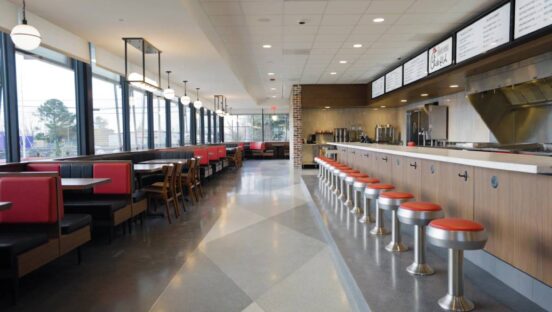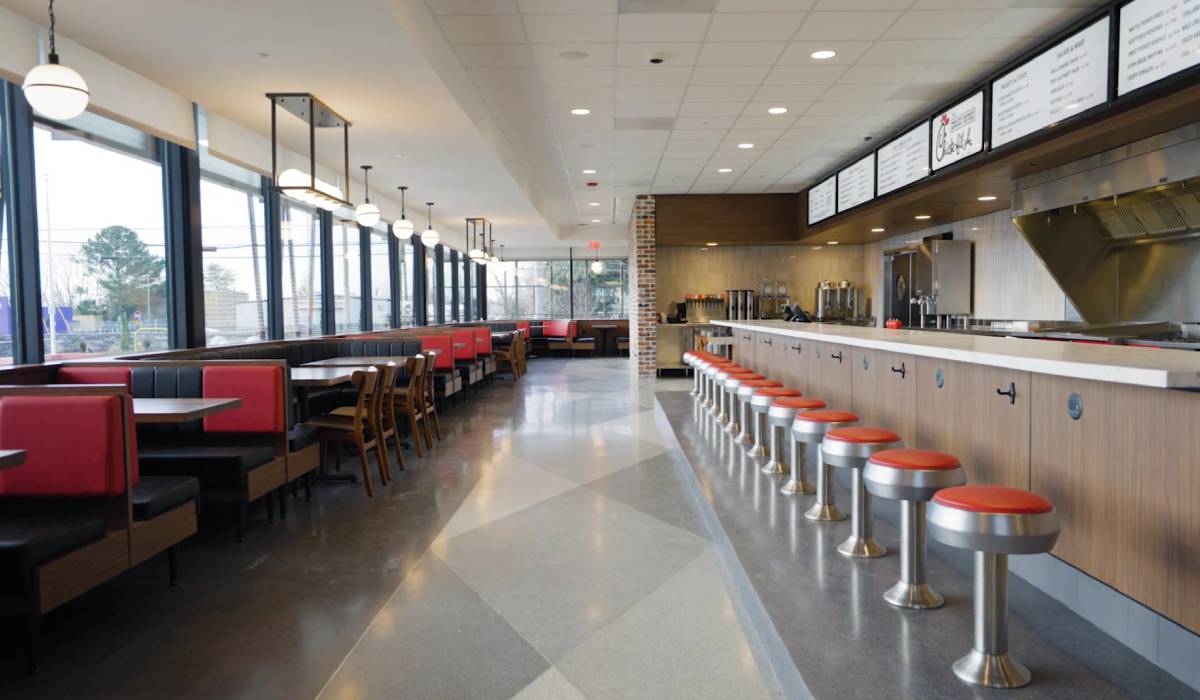“Next in the line.”
There it was. The familiar greeting I’ve heard a thousand times. It cues customers to step forward. It’s fast, efficient, and keeps the line moving. In this case, however, it felt a little strange, because there was no line.
It was 11 am. I was the first and only customer coming in for an early lunch. But when the woman behind counter saw me, her muscle memory kicked in. She couldn’t deviate from the script. She was trained to greet customers one way, even when it didn’t totally make sense.
Still, my mood was good and I approached with a warm smile. “Hello!” I said as friendly as I could. “I’d like a No. 5 with a bottle of water to go.”
She tapped my order onto her tablet. “Will that be for here or to go?”
“Uh, I’ll have that to go.”
Money and receipt changed hands. Five minutes later, she held up my takeout bag, looked me right in the eye, and shouted, “Customer No. 1!”
This experience perfectly demonstrated how so many quick-service restaurants perceive customers. I wasn’t a guest. I wasn’t Scott. I was “customer No. 1.” I was literally a number. I was a transaction with legs.
No one who’d had that experience would complain. It was pretty typical of what we expect when we grab a quick meal. This wasn’t a place with red carpets or white tablecloths. Their value proposition was food that’s quick, cheap, and good, all of which it was. It’s a low bar consumers have accepted. What so many quick-serve operators fail to understand, however, is how much money they’re leaving on their cloth-less tables.
Consumers have countless restaurant choices, sometimes at the same intersection. With a market this crowded, operators need to embrace every opportunity to stand out and make an impression.
Most believe that means more marketing. Run more ads. Offer more coupons. Sign onto the latest digital marketing platforms. Everyone’s trying to out-scream each other.
The untapped opportunity is in out-serving each other. That means offering an experience superior to your competition’s. When you add great service to fast, affordable food, your customers will be screaming on your behalf—just like they do for Chick-Fil-A, In-N-Out, Starbucks, and other cult brands that aren’t necessarily quicker or cheaper.
Here are a few ways to join their ranks:
Expect more from your employees. The most common reason I get from restaurant owners for lackluster service is bad employees. “We just can’t find good people for what we can afford to pay.” I understand this and for a while, I believed it myself. I owned two Edible Arrangements franchises for more than a decade and paid my team little more than minimum wage. We went through a lot of employees during those first few years. What I eventually learned is that when we coached them properly and worked to make them feel good (as we wanted them to do for customers), their performance improved. I could afford to invest in paying employees more, but I could compensate by investing more time coaching them. That investment paid off. Our online reviews jumped up and we eventually won the Edible Arrangement “Best Customer Service” award out of more than 1,000 locations worldwide. We achieved this without exceeding our labor cost benchmark. Better leadership led to better customer service and ultimately, higher sales. Expect your employees to perform and give them the support to succeed. Unless you’re truly providing high-level management, you can’t complain about low-level employee performance.
Build a strong internal culture. Branding is how a business feels on the outside to consumers. Culture is how it feels on the inside to employees. The two are correlated. I first noticed this preparing for a keynote presentation to a well-known quick-service restaurant franchise. The average customer ratings for restaurants in their sector were pretty low. So were employee satisfaction scores. But when I looked at the brands with the highest customer satisfaction ratings, they also had the best employee reviews. People who like where they work and with whom they work, work better for customers.
Every workplace has a culture, if not by design, then by default. Be as deliberate about the social dynamics of your team as you are of operations. Find ways to unify them. Connect them to a higher purpose (by actually defining one). Create rituals that engage employees in their work, such as pre-shift huddles and employee recognition programs. Make the place feel great to employees. They’ll pass that on to customers.
Focus on emotions. The experience you create for guests matters. What you give them is less memorable than how you make them feel. Because along with their physical hunger are other desires they may not realize they have, but notice when fulfilled. People want to be seen and heard. They want to be appreciated. They want to feel safe. They want to have fun. We don’t all share the same emotional needs at the same time, but we do all have an innate desire to feel good. And experiences that make us feel good are the ones we most remember, talk about, and want to repeat.
So if you really want to level up your business, do more than sell customers food. Elevate their emotions. Tap into how they feel. You’re probably already attempting to this with your marketing. Understand that every transaction is a marketing opportunity. It’s a chance to turn a customer into a repeat customer and spokesperson for your restaurant. That happens most when they leave feeling great. Look for small, nuanced ways to provide emotional satisfaction. Offer warm greetings. Connect with them human to human. Find opportunities to surprise them. Go visit the top brands in your sector and read their online reviews. See what they’re doing to delight customers. Notice what impresses you as a consumer. Then do the same things, but even better.
If you’re not doing these things, then what are you doing? Ushering customers forward? Taking their order? Giving them their food? These things aren’t impressive; they’re expected. They’re certainly not competitive. Other restaurants want your customers. You need to protect what you have and aggressively go after market share. You could be the loudest. You could be the cheapest. I say, try being the best.
Everyone claims they’re in the “people business.” That doesn’t work when all you offer is “next in line” robotics. Your customers are flesh and blood, emotional beings. They’ll settle for food, speed, and savings, but deep down they want more and notice when they get it. They’ll pay more for it, too, and more often. Make customer experience a priority. Be purposeful about how you make people feel. When you start treating them as more than numbers, you’ll soon see a huge boost to your numbers.
Scott Greenberg is a speaker, writer, and business coach and the author of The Wealthy Franchisee: Game-Changing Steps to Becoming a Thriving Franchise Superstar.














